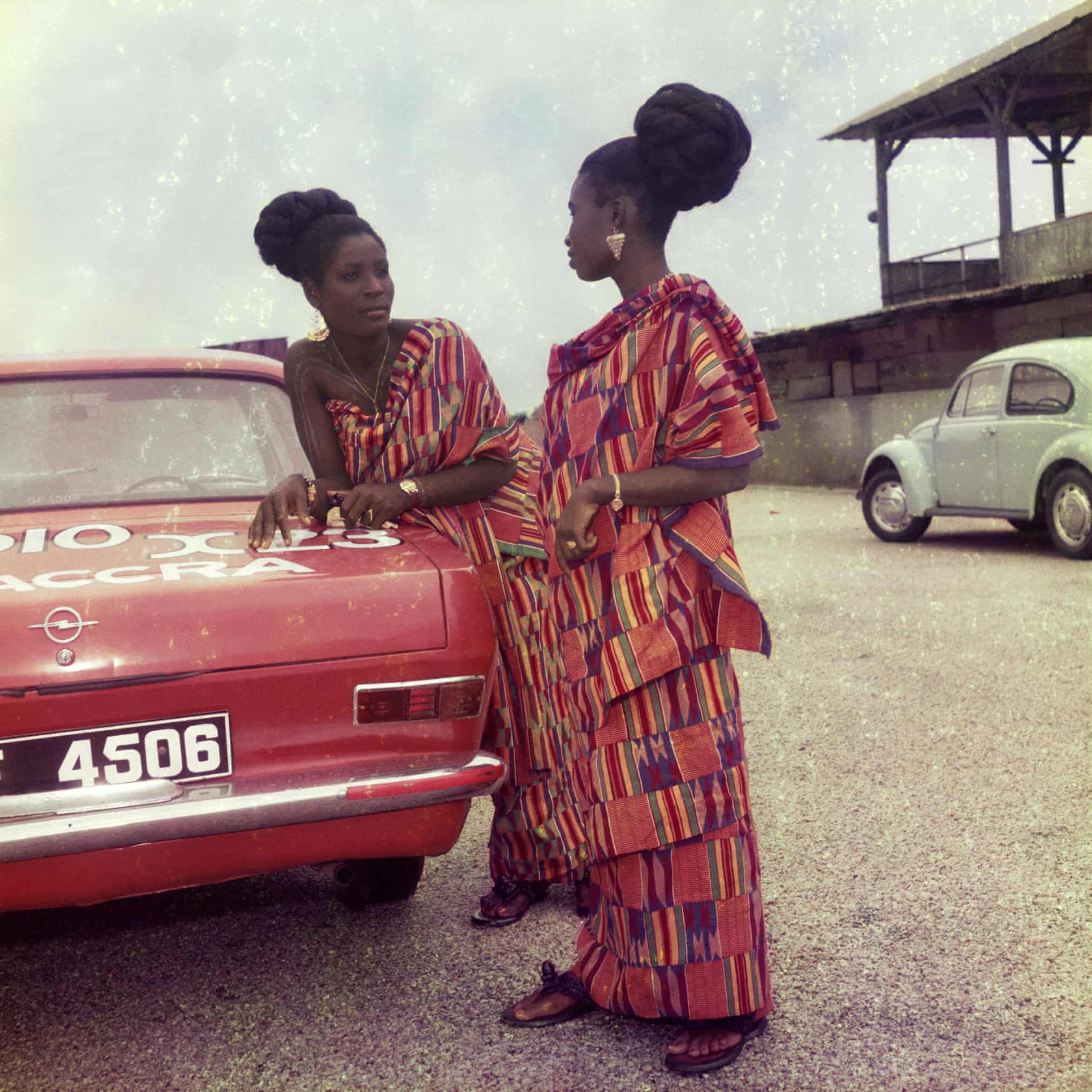As a second-generation Ghanaian diasporan born and bred in the Netherlands the work of James Barnor intrigues me in several ways. Certainly, because it gives me a glimpse of Ghanaian history, yet what stands out most are the photographs of Ghanaian women, which he captured in all their glory. Their poses, their attire, their hairstyles and the backdrop of the pictures, depicting a reality different than the status quo, allows me to imagine how the uniqueness of womanhood has travelled through space and time. When I look at the women in the photographs I see courage, strength and poise. Women who are confident about who they are in this world. Women that take up space.
In 2017 I was fortunate to meet James Barnor at a ‘Future of Ghana’ event in Hamburg themed Footprints. He spoke about his photobook Ever Young that traces his work from 1950 to 1970. The audience was filled with second-generation diasporans like myself, born in the late 80s and early 90s, who were eager to pick from his wisdom nuggets. ‘Why is that?’ I wondered. It didn’t take me long to realize that his work wasn’t only ground-breaking because it allowed Ghana to be seen in colour for the first time. It continues to be ground-breaking because his photographs that once captured a moment continue to convey emotions, moods, ideas and narratives that foster conversations about present matters. In my eyes, that in itself, makes James Barnor a force to be reckoned with—as his own footprints testify.
This week The Guardian published a phenomenal retrospective of Barnor's work. Check it out here.
Join the Serpentine for Portraits for the Future, a unique virtual event celebrating visionary photographer James Barnor’s practice and his influence on generations of artists.
Stephanie Duncan Williams is ZAM's Co-ordinator.


